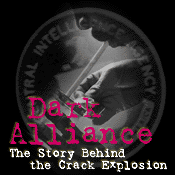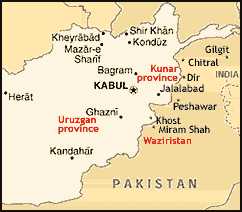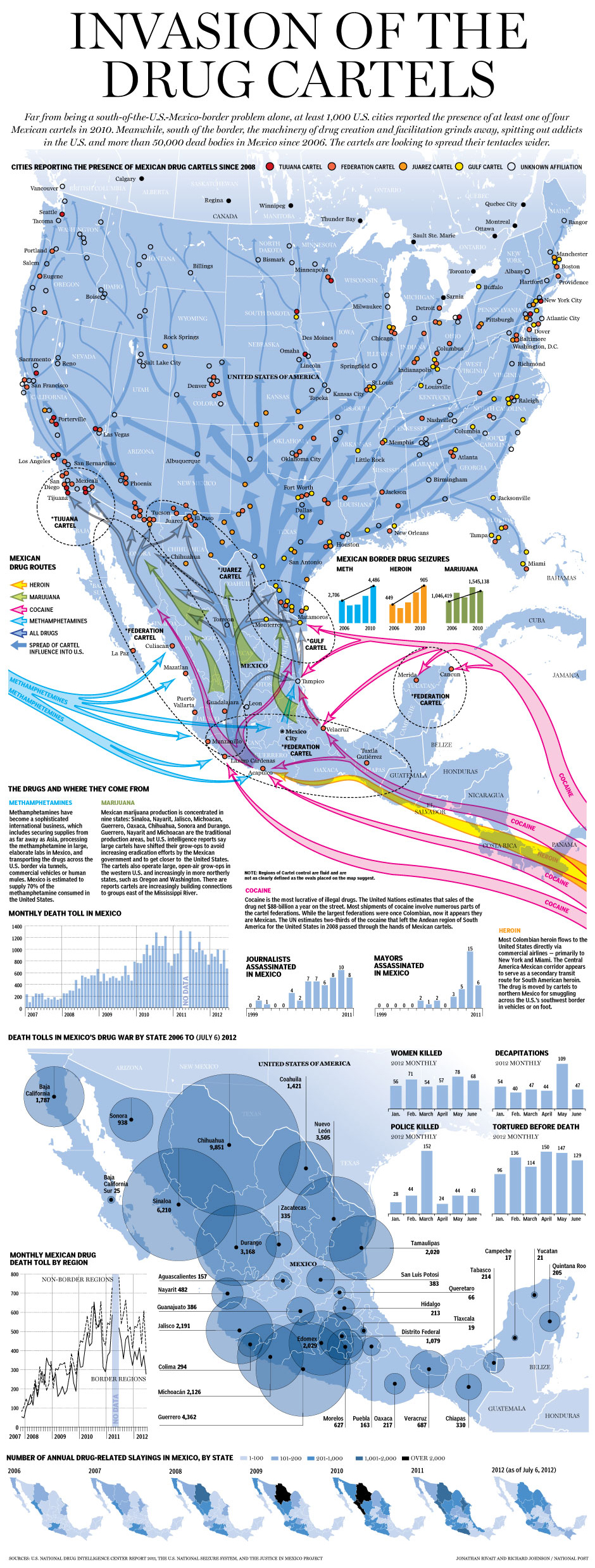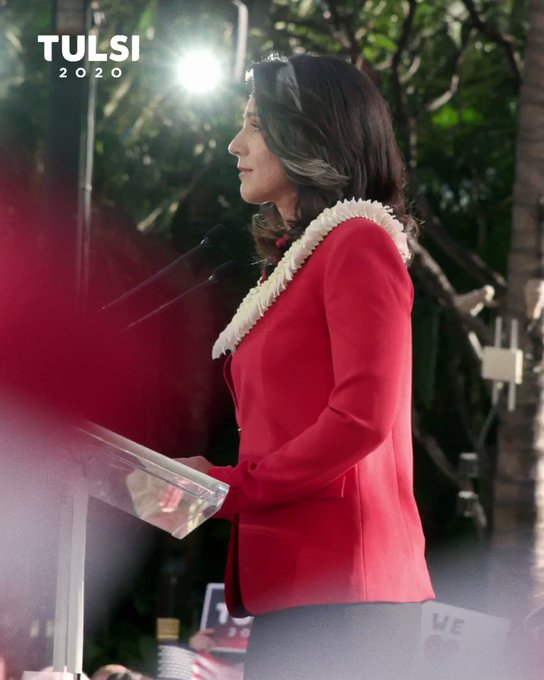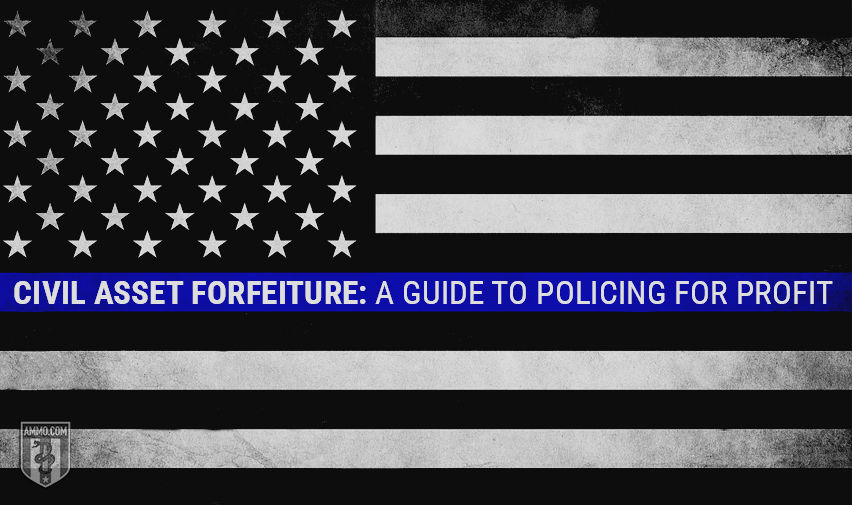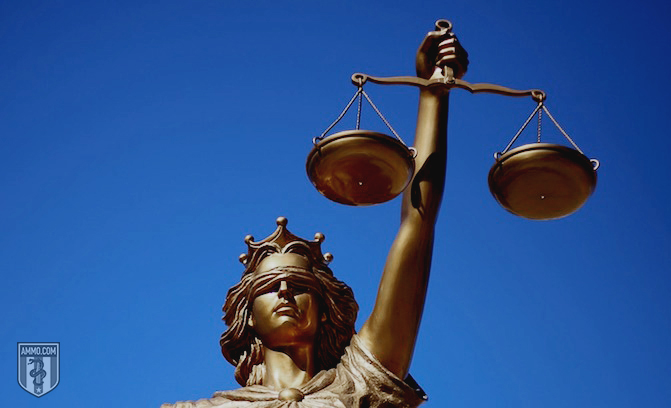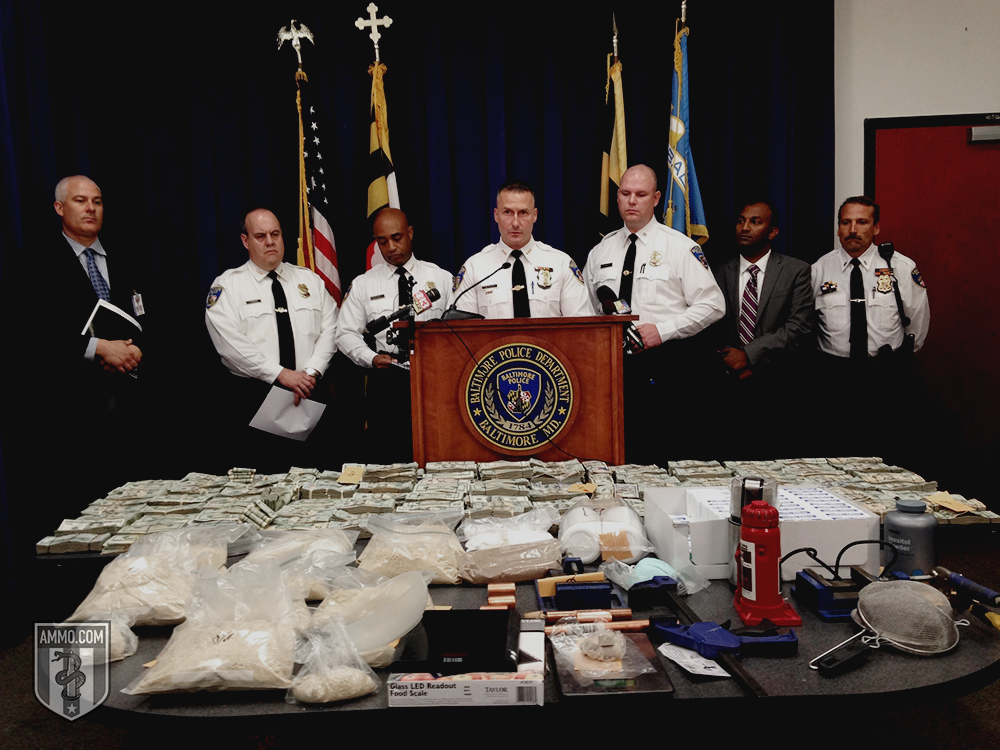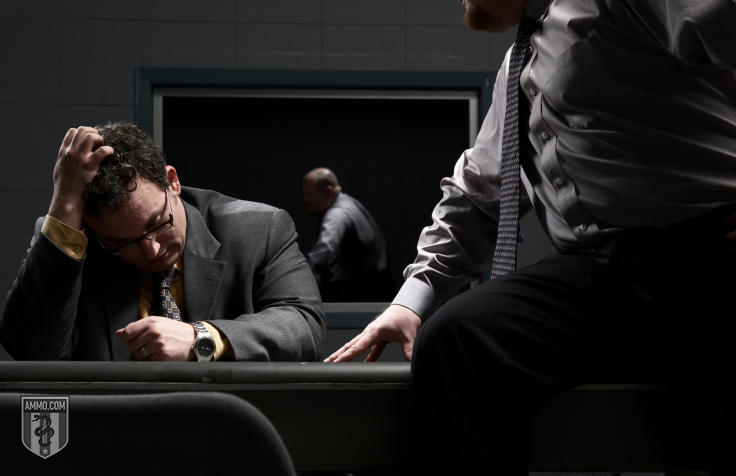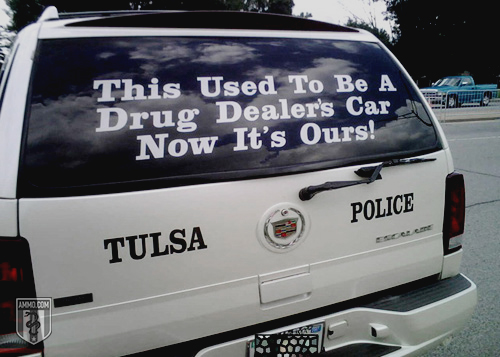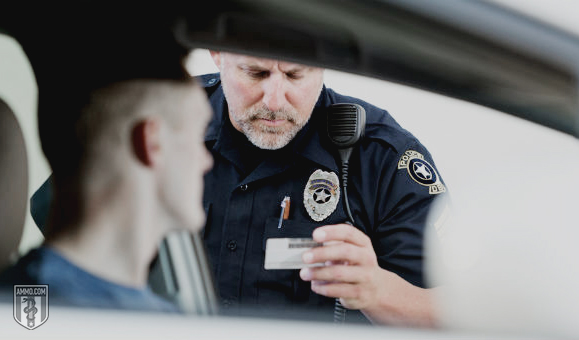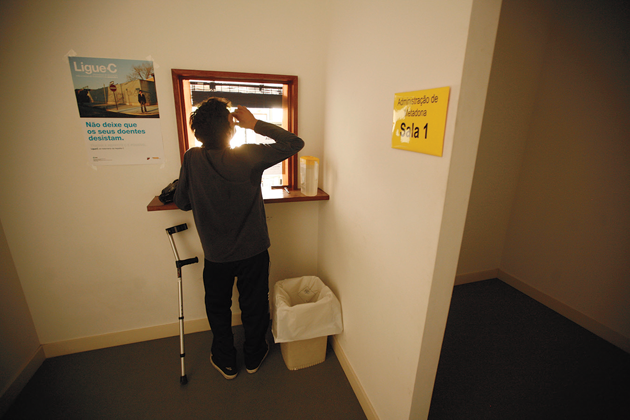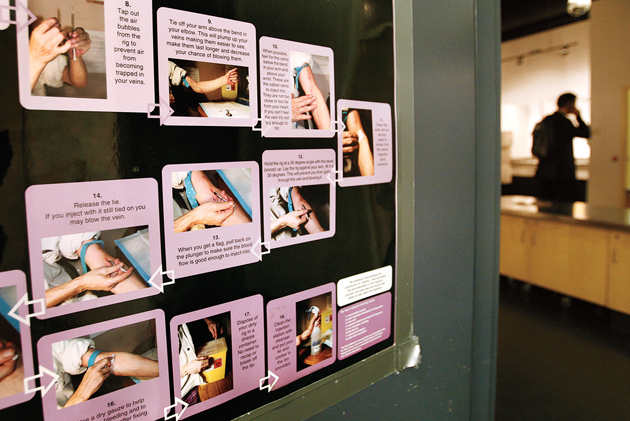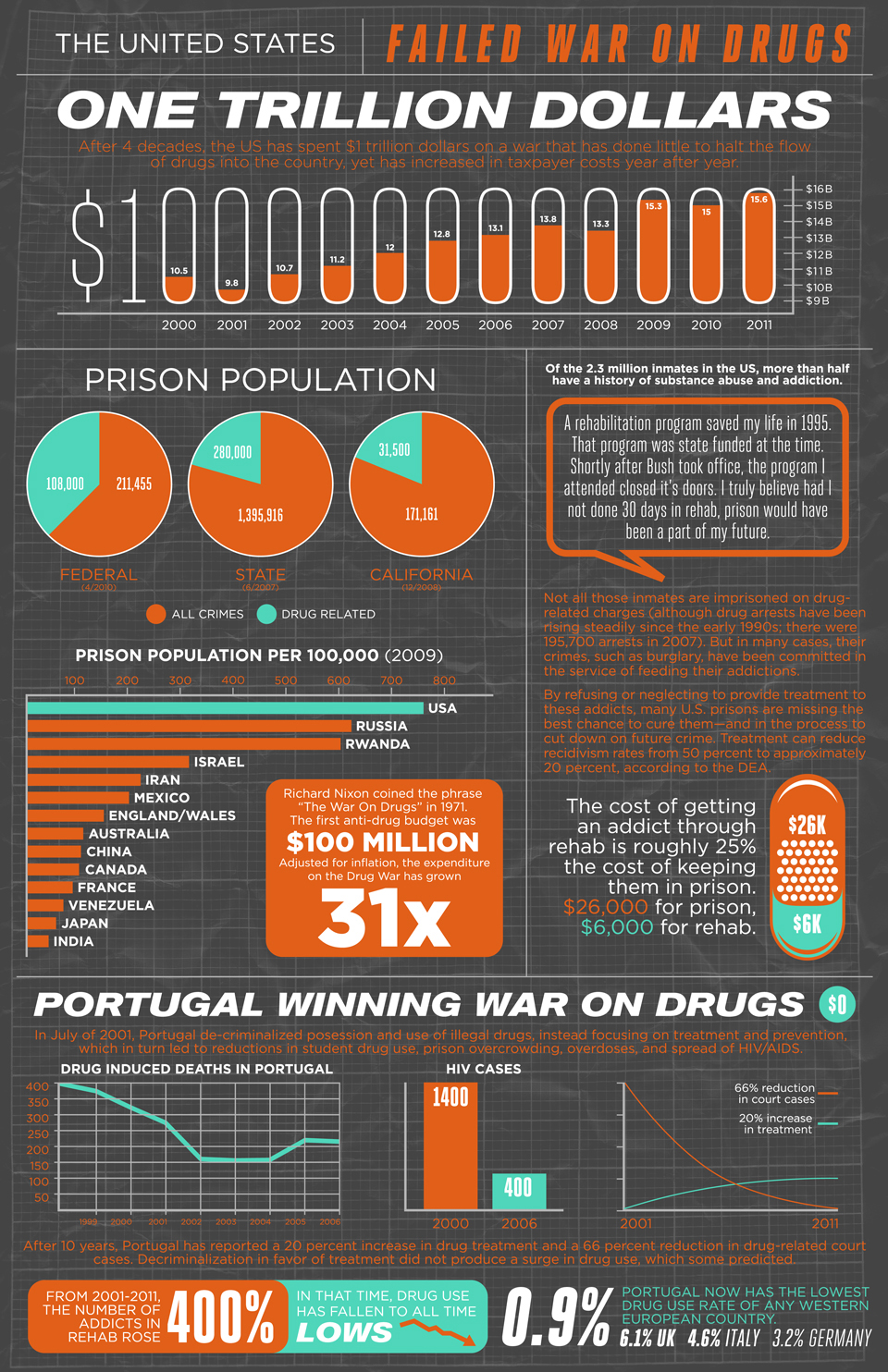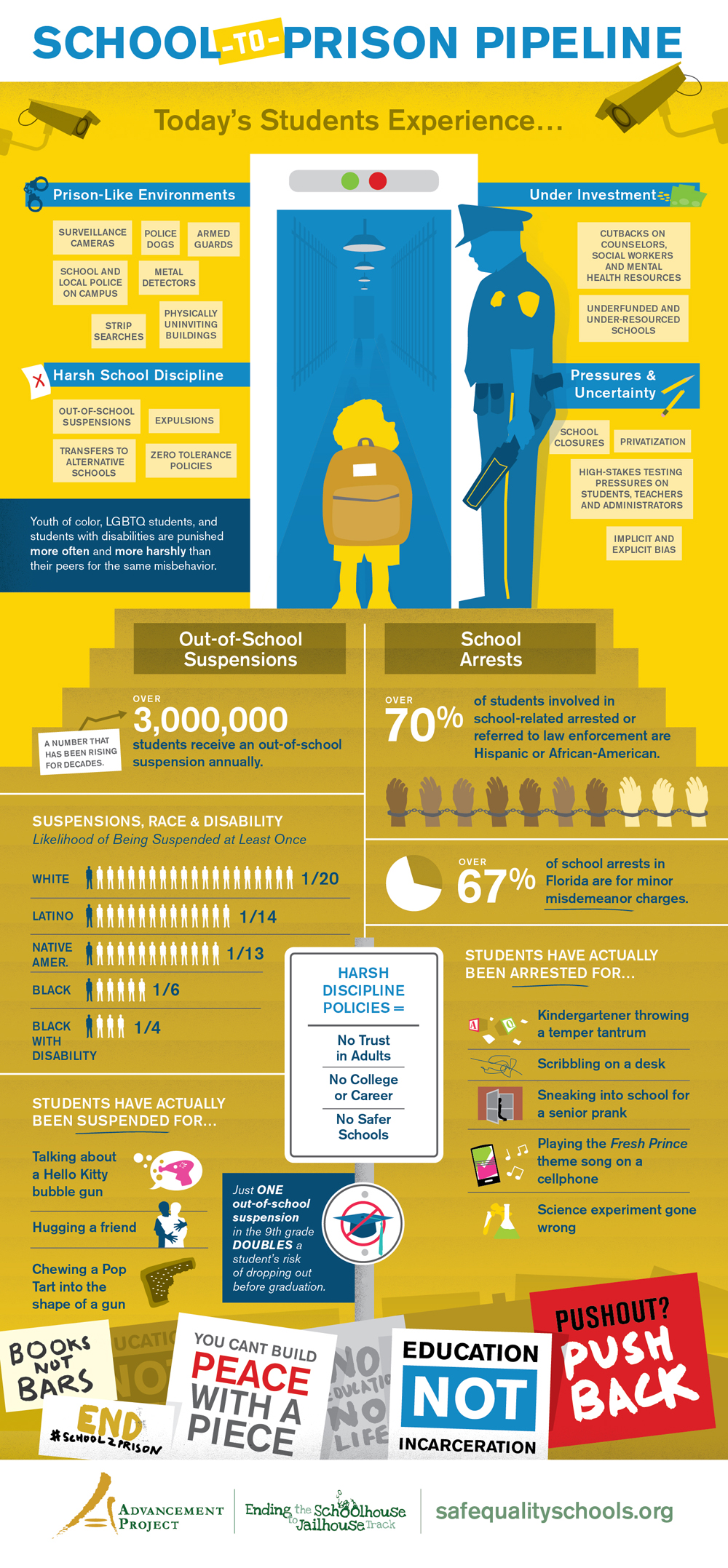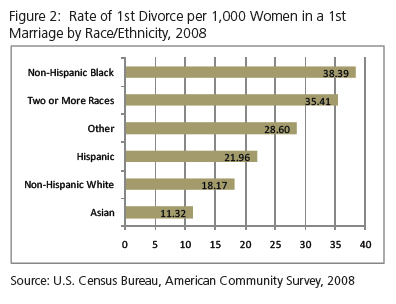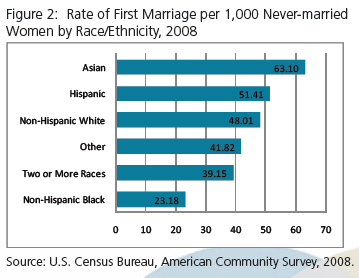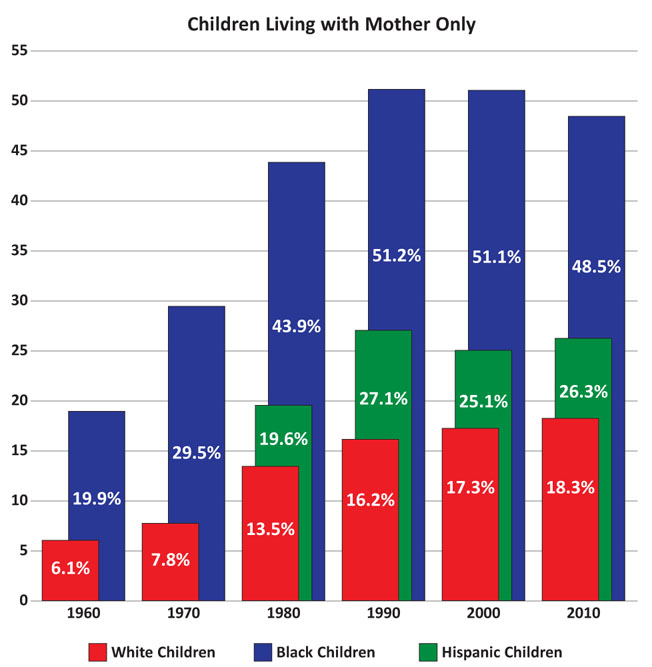Drug Testing (Employment)
Click here for the complete datatable of Drug Positivity Rates Of US Employees Subjected to Urine Drug Tests, by Worker Category
"Quest Diagnostics Drug Testing Index™ Full year 2016 tables," Quest Diagnostics, Table 2, p. 2, last accessed Nov. 13, 2017.
http://www.questdiagnostics.co...
http://www.questdiagnostics.co...
"Increases in Illicit Drugs, Including Cocaine, Drive Workforce Drug Positivity to Highest Rate in 12 Years, Quest Diagnostics Analysis Finds," Quest Diagnostics, May 16, 2017.
http://newsroom.questdiagnosti...
"Workforce Drug Test Positivity Rate Increases for the First Time in 10 Years, Driven by Marijuana and Amphetamines, Find Quest Diagnostics Drug Testing Indextm Analysis of Employment Drug Tests," Quest Diagnostics, September 11, 2014, last accessed March 6, 2015.
http://www.questdiagnostics.com...
2. Prevalence of Pre-Employment Drug Testing in the US
"When [human resource professionals were] asked if pre-employment testing was done prior to hiring an individual, a majority (57%) reported they test for job candidates, a slight increase in 2011 vs. 2010. The remaining categories of pre-employment testing, (selected candidates only, and positions required by state law) indicated a decrease in testing in 2011 vs. 2010 perhaps due to the slowdown in the economy. Thus, in 2011, 71% of respondents reported some category of pre-employment drug testing. However, the percentage of respondents who reported that their organizations do not conduct any pre-employment testing rose from 21% in 2010 to 29% in 2011. The companies were not asked the reasons as to why they did not drug test, but several reported that they did not believe in drug testing (see Figure 5)."
Fortner, Neil A.; Martin, David M.; Esen, S. Evren; and Shelton, Laura , "Employee Drug Testing: Study Shows Improved Productivity and Attendance and Decreased Workers’ Compensation and Turnover," Journal of Global Drug Policy and Practice (2011), Volume 5, Issue 4, p. 6.
http://www.globaldrugpolicy.or...
3. Prevalence of Pre- and Post-Employment Drug Testing of Workers in the US
"Drug and alcohol testing continues to be an important part of screening both before and after hire. Fifty-eight percent of respondents indicated their organization conducted drug and/or alcohol screening, and this number jumped to 62% for respondents with organizations of more than 4,000 employees.
"The vast majority of organizations (95%) that indicated they conducted drug testing, perform urine tests. Breath alcohol tests (23%), hair (9%), saliva (8%), and blood testing (6%) were also conducted, but much less frequently.
"Fifty percent of the organizations that conducted drug and alcohol screening used an electronic Chain-of-Custody (eCOC) form to track results with 10% indicating they would adopt the form if it became acceptable by federal regulation."
"Employment Screening Benchmark Report, 2014 Edition," HireRight, Inc., March 2014, pp. 21-22.
http://img.en25.com/Web/HireRi...
4. Price of Tests
"As expected the average price for a drug test reported by the majority of respondents (67%) ranges between $20-$50. This would vary depending upon the drugs being tested, collection and shipping fees, and Medical Review Officer (MRO) services. The low end cost of $10-$20 reported by 15% of the respondents was most likely in-house instant urine tests."
Fortner, Neil A.; Martin, David M.; Esen, S. Evren; and Shelton, Laura , "Employee Drug Testing: Study Shows Improved Productivity and Attendance and Decreased Workers’ Compensation and Turnover," Journal of Global Drug Policy and Practice (2011), Volume 5, Issue 4, p. 16.
http://www.globaldrugpolicy.or...
5. Drug Test Positivity Rates for Methamphetamine Among US Workers Subjected to Drug Testing
"Amphetamines (which includes amphetamine and methamphetamine) positivity continued its year-over-year upward trend, increasing more than eight percent in urine testing in both the general U.S. and federally-mandated, safety-sensitive workforces compared to 2015. Throughout the last decade, this rise has been driven primarily by amphetamine use which includes certain prescription drugs such as Adderall®.
"Although methamphetamine positivity in urine testing declined between 2005 and 2008, the positivity rate plateaued between 2008 and 2012, and has increased steadily since. Between 2012 and 2016, it climbed 64 percent in the general U.S. workforce and 14 percent among federally-mandated, safety-sensitive workers. In oral fluid, methamphetamines positivity increased 75 percent between 2013 (0.24%) and 2016 (0.42%)."
"Quest Diagnostics Drug Testing Index™ Full year 2016 tables," Quest Diagnostics, Table 2, last accessed Nov. 13, 2017.
http://www.questdiagnostics.co...
http://www.questdiagnostics.co...
"Increases in Illicit Drugs, Including Cocaine, Drive Workforce Drug Positivity to Highest Rate in 12 Years, Quest Diagnostics Analysis Finds," Quest Diagnostics, May 16, 2017.
http://newsroom.questdiagnosti...
6. Drug Test Positivity Rates for Heroin and Other Opiates Among US Workers Subject to Drug Testing
"After four straight years of increases, in 2016, urine testing positivity for heroin, indicated by the presence of the 6-acetylmorphine (6-AM) metabolite, held steady in the general U.S. workforce and declined slightly among federally-mandated, safety-sensitive workers.
"Prescription opiate positivity – including hydrocodone, hydromorphone and oxycodones – declined in urine testing among the general U.S. workforce. Oxycodones have exhibited four consecutive years of declines, dropping 28 percent from 0.96 percent in 2012 to 0.69 percent in 2016. Hydrocodone and hydromorphone both showed double-digit declines in both 2015 and 2016 (0.92% in 2015 to 0.81% in 2016) and (0.67% in 2015 to 0.59% in 2016), respectively.
"In recent years, state and federal authorities have instituted efforts to more tightly control opiate prescribing in order to address the opioid crisis."
"Quest Diagnostics Drug Testing Index™ Full year 2016 tables," Quest Diagnostics, Table 2, last accessed Nov. 13, 2017.
http://www.questdiagnostics.co...
http://www.questdiagnostics.co...
"Increases in Illicit Drugs, Including Cocaine, Drive Workforce Drug Positivity to Highest Rate in 12 Years, Quest Diagnostics Analysis Finds," Quest Diagnostics, May 16, 2017.
http://newsroom.questdiagnosti...
7. Prevalence of Employee Drug Testing
"The majority of human resource professionals surveyed in this brief study report that their organizations have a drug testing program; furthermore a majority of those respondents report some perceived benefits in reduced absenteeism and workers’ compensation claims, and increased worker productivity/performance. More than half of employers surveyed conduct drug tests on all job candidates, while only 29% do not conduct drug tests on any job candidates. In addition, most employers who use tests on job candidates have done so for seven years or more. When employers do post-employment drug tests, the most common tests are post-accident testing, random testing, and reasonable suspicion testing."
Fortner, Neil A.; Martin, David M.; Esen, S. Evren; and Shelton, Laura , "Employee Drug Testing: Study Shows Improved Productivity and Attendance and Decreased Workers’ Compensation and Turnover," Journal of Global Drug Policy and Practice (2011), Volume 5, Issue 4, p. 18.
http://www.globaldrugpolicy.or...
8. Type of Drug Test Used By Employers
"When companies were asked what type of drug testing sample they used, the human resource professionals responded that 84% used urine as the sample of choice, with the test performed in an off-site laboratory. Only 24% responded that they used instant urine tests, only 6% used hair testing, and 5% used instant or off-site laboratory oral fluid tests."
Fortner, Neil A.; Martin, David M.; Esen, S. Evren; and Shelton, Laura , "Employee Drug Testing: Study Shows Improved Productivity and Attendance and Decreased Workers’ Compensation and Turnover," Journal of Global Drug Policy and Practice (2011), Volume 5, Issue 4, p. 15.
http://www.globaldrugpolicy.or...
9. Drug Positive Rates In Combined US Workforce, 2013 and Trends
"Methamphetamine Positivity Increases Across All Testing Types
"Amphetamines are a class of central nervous system stimulants that includes methamphetamine (best known for being produced in clandestine labs) and prescription medications for conditions such as ADHD and narcolepsy.
"Continuing a multi-year upward trend, amphetamines use – specifically the use of methamphetamine – showed an increase across all three specimen types. Combined U.S. workforce data in urine showed a 10 percent (0.85% vs. 0.77%) year-over-year increase in amphetamines positivity in 2013 compared to 2012. In the U.S. general workforce, methamphetamine positivity in urine drug tests increased 27 percent (0.14% vs. 0.11%); oral fluid methamphetamine positivity increased by 50 percent (0.24% vs. 0.16%). In addition, the positivity rate in hair testing jumped by 55 percent (1.2% vs. 0.77%). Amphetamines positivity rates are now at their highest levels on record and methamphetamine positivity rates are at their highest levels since 2007, across all specimen types.
"Oxycodones Positivity Declines for the Second Consecutive Year
"The DTI data also reported declines for prescription opiates positivity in urine drug tests. Prescription opiates refer to drugs used for pain management, such as hydrocodone and oxycodones. The current data shows oxycodones positivity declined 8.3 percent (0.88% vs. 0.96%) between 2013 and 2012 and 12.7 percent (0.96% vs. 1.1%) between 2012 and 2011 in the combined U.S. workforce. Four states experienced double-digit declines in oxycodones positivity rates in both 2013 and 2012: Florida, Massachusetts, New Jersey and Ohio. Hydrocodone positivity remained at 1.3 percent between 2012 and 2013."
"Workforce Drug Test Positivity Rate Increases for the First Time in 10 Years, Driven by Marijuana and Amphetamines, Find Quest Diagnostics Drug Testing Indextm Analysis of Employment Drug Tests," Quest Diagnostics, September 11, 2014, last accessed March 6, 2015.
http://www.questdiagnostics.co...
10. Employee Drug Testing Triggers
"Incumbent worker programs commonly include at least one of four testing triggers. Under 'reasonable cause' testing, an individual worker may be tested if her behavior reasonably gives rise to the suspicion of drug use. 'Comprehensive' testing involves the periodic, scheduled testing of all employees, such as during routine physical exams. 'Random' testing involves testing all employees (or particular groups of workers) on an unannounced and variable schedule (Hartwell et al., 1996). Finally, 'post-accident' drug testing (PADT) subjects any employee who reports a workplace accident (and sometimes co-workers who were directly involved) to a drug test at the time the report is made, regardless of whether the reporting worker’s conduct precipitated the incident."
Morantz, Alison D., & Mas, Alexandre, "Does Post-Accident Drug Testing Reduce Injuries? Evidence from a Large Retail Chain," American Law and Economics Review (Cary, NC: American Law and Economics Association, August 23, 2008) , Vol. 10, No. 2, p. 248.
http://www.princeton.edu/~amas...
11. Prevalence of Marijuana Use Among Full-Time Workers in the US
" An estimated 6.4 percent, or 7.3 million, of full-time workers reported use of marijuana during the past month (Tables 2.2 and 2.3).
" Adults aged 26 to 34 were only about half as likely as 18- to 25-year-olds to be past month marijuana users (8.0 vs. 15.9 percent). Past month use of marijuana was lower with increasing age (Table 2.2).
" The prevalence of past month marijuana use was higher for males than females (7.9 vs. 4.3 percent, respectively) (Table 2.2).
" An estimated 11.0 percent of workers reporting two or more races used marijuana during the past month. This was higher than among non-Hispanic white adults (6.9 percent). Fewer Hispanic adults (4.6 percent) reported past month marijuana use than non-Hispanic white adults who reported two or more races (Table 2.2).
" Higher educational attainment and higher family income were associated with a lower prevalence of current marijuana use (Table 2.3)."
Larson, S. L., Eyerman, J., Foster, M. S., & Gfroerer, J. C. (2007). Worker Substance Use and Workplace Policies and Programs (DHHS Publication No. SMA 07-4273, Analytic Series A-29). Rockville, MD: Substance Abuse and Mental Health Services Administration, Office of Applied Studies, pp. 15-16.
http://adaiclearinghouse.org/d...
12. Prevalence of Illicit Drug Use Among Full-Time Employees in the US,
" The prevalence of past month illicit drug use among adult full-time workers was 8.2 percent (Figure 2.3 and Tables 2.2 and 2.3).
" Nearly one out of five (19.0 percent) workers aged 18 to 25 used illicit drugs during the past month. This was a higher percentage than among the 26-to-34 (10.3 percent), 35-to-49 (7.0 percent), and 50-to-64 (2.6 percent) age groups (Figure 2.3 and Table 2.2).
" Males were more likely than females to report past month illicit drug use (9.7 vs. 6.2 percent). Males accounted for about two thirds (6.4 million) of the workers who reported past month illicit drug use (Figure 2.4 and Table 2.2).
" The prevalence of past month illicit drug use for white adults was 8.8 percent, higher than the prevalence for Asian (2.2 percent) or Hispanic (6.7 percent) adults, and lower than that reported for adults who reported two or more races (13.5 percent). The prevalence of past month illicit drug use by Asians was lower than that reported by all other racial/ethnic groups reported here (Figure 2.5 and Table 2.2)."
Larson, S. L., Eyerman, J., Foster, M. S., & Gfroerer, J. C. (2007). Worker Substance Use and Workplace Policies and Programs (DHHS Publication No. SMA 07-4273, Analytic Series A-29). Rockville, MD: Substance Abuse and Mental Health Services Administration, Office of Applied Studies, p. 12.
http://adaiclearinghouse.org/d...
13. Reported Educational Achievement and Income of Drug Using Versus Non-Using Full-Time Workers
" Workers with a college education had a lower prevalence of current illicit drug use compared with those without a college education. The prevalence of past month use of illicit drugs was lower among those with higher levels of education than those with less education (college graduate [5.7 percent] vs. less than high school [11.2 percent]) (Figure 2.6 and Table 2.3).
" The prevalence of current illicit drug use was lower among workers with higher family incomes than among workers with lower family incomes. An estimated 13.2 percent of workers who reported family income that was less than $20,000 had used illicit drugs during the past month. In contrast, 6.0 percent of workers who reported income in the highest category––$75,000 or more––had used illicit drugs during the past month (Figure 2.7 and Table 2.3).
" Residents of noncore counties had a lower prevalence of current illicit drug use (4.5 to 6.2 percent) compared with residents of micropolitan statistical area (7.1 percent), small metropolitan statistical area (MSA; 8.8 percent), and large MSA (8.3 percent) counties (Table 2.3)."
Larson, S. L., Eyerman, J., Foster, M. S., & Gfroerer, J. C. (2007). Worker Substance Use and Workplace Policies and Programs (DHHS Publication No. SMA 07-4273, Analytic Series A-29). Rockville, MD: Substance Abuse and Mental Health Services Administration, Office of Applied Studies, pp. 12-15.
http://adaiclearinghouse.org/d...
14. Prevalence of Illicit Drug Dependence or Abuse Among Full-Time Workers in the US
" Approximately 3 million full-time workers (2.6 percent) aged 18 to 64 met the criteria for past year illicit drug dependence or abuse (Figure 2.3 and Table 2.4).
" Approximately 7.5 percent of 18- to 25-year-old workers had past year illicit drug dependence or abuse. This was higher than among all other age groups studied (26- to 34-year-olds [3.3 percent], 35- to 49-year-olds [1.9 percent], and 50- to 64-year-olds [0.7 percent]) (Figure 2.3 and Table 2.4).
" Males were nearly twice as likely as females to meet the criteria for past year illicit drug dependence or abuse (3.3 vs. 1.8 percent) (Figure 2.4 and Table 2.4).
" Hispanics (3.2 percent) had a higher prevalence of past year illicit drug dependence or abuse than non-Hispanics (2.6 percent) (Figure 2.8 and Table 2.4).
" Within non-Hispanic subgroups, Asians had the lowest prevalence of past year illicit drug dependence or abuse (1.1 percent). This was lower than non-Hispanic white adults (2.5 percent), black (2.9 percent) adults, American Indian or Alaska Native (4.5 percent) adults, and adults reporting two or more races (4.3 percent) (Figure 2.8 and Table 2.4)."
Larson, S. L., Eyerman, J., Foster, M. S., & Gfroerer, J. C. (2007). Worker Substance Use and Workplace Policies and Programs (DHHS Publication No. SMA 07-4273, Analytic Series A-29). Rockville, MD: Substance Abuse and Mental Health Services Administration, Office of Applied Studies, p. 17.
http://adaiclearinghouse.org/d...
15. Prevalence of Heavy Alcohol Use Among Full-Time Workers in the US
" An estimated 8.8 percent, or 10.1 million, of full-time workers reported past month heavy alcohol use (Figure 2.3 and Tables 2.2 and 2.3).
" Past month heavy alcohol use was related to age. Among younger workers (18 to 25 years old), 16.3 percent reported past month heavy alcohol use compared with 10.4 percent of 26- to 34-year-olds, 8.1 percent of 35- to 49-year-olds, and 4.7 percent of 50- to 64-year-olds (Figure 2.3 and Table 2.2).
" Males were three times as likely as females to be past month heavy alcohol users (12.3 vs. 4.1 percent) (Figure 2.4 and Table 2.2).
" An estimated 10.1 percent of white adults reported heavy alcohol use in the past month. This was higher than the percentage among black adults (5.4 percent), Asian adults (2.9 percent), Hispanic adults (6.9 percent), and adults reporting two or more races (7.5 percent) (Figure 2.5 and Table 2.2).
" Residents of noncore rural counties had a lower prevalence of past month heavy alcohol use (7.5 percent) compared with residents of micropolitan statistical area (9.2 percent), small MSA (9.8 percent), and large MSA (8.1 percent) counties (Table 2.3).
" Workers with a college education had a lower prevalence of past month heavy alcohol use compared with those without a college education. Past month heavy alcohol use was lower among those with higher levels of education than those with less education (college graduate [6.7 percent] vs. less than high school [10.8 percent]) (Figure 2.6 and Table 2.3)."
Larson, S. L., Eyerman, J., Foster, M. S., & Gfroerer, J. C. (2007). Worker Substance Use and Workplace Policies and Programs (DHHS Publication No. SMA 07-4273, Analytic Series A-29). Rockville, MD: Substance Abuse and Mental Health Services Administration, Office of Applied Studies, p. 16.
http://adaiclearinghouse.org/d...
16. Post-Accident Drug Testing Discourages Accident Reporting
"If a substantial portion of the observed drop in [worker's compensation] claims [after implementation of the PADT - post-accident drug testing program] is driven by underreporting, however, PADT’s net effect on the Company and its employees is less clear. Not only may the administration of the PADT program itself be costly to the Company, but unreported workplace hazards could fester and, over the long term, impose even higher costs. Meanwhile, PADT may make accident reporting so costly for some workers that they opt to pay for medical care out-of-pocket or simply endure injuries that would otherwise be treatable through workers’ compensation. If many workers are covered by health insurance plans—particularly if they are covered on a family member’s plan—the costs of treatment could be shifted from the Company onto other benefits providers."
Morantz, Alison D., & Mas, Alexandre, "Does Post-Accident Drug Testing Reduce Injuries? Evidence from a Large Retail Chain," American Law and Economics Review (Cary, NC: American Law and Economics Association, August 23, 2008) , Vol. 10, No. 2, p. 296.
http://www.princeton.edu/~amas...
17. Trends in Prevalence of Employee Drug Testing
The American Management Association conducted surveys of workplace surveillance and medical testing throughout the 1990s and into the 2000s. In 1991, drug testing of some kind was conducted by 63% of companies surveyed, growing to 81% in 1996, falling to 66% in 2000 and then to 62% in 2004. Drug testing of new hires was conducted by 48% of companies in 1991, growing to 68% in 1996, falling to 61% in 2000 and then to 54.5% in 2004. Drug testing of current employees was conducted by 52% of companies surveyed in 1991, rising to 70% in 1996, falling to 47% in 2000 and then to 44.3% in 2004.
American Management Association, "AMA 2004 Workplace Testing Survey: Medical Testing" (New York, NY: American Management Association, 2004), p. 2.
http://www.amanet.org/training...
A 2000 AMA Survey: Workplace Testing: Medical Testing: Summary of Key Findings (New York, NY: American Management Association, 2000), p. 3.
18. Drug Testing vs Impairment Testing
Impairment Testinghttp://workrights.us/?products...
19. Limited Use, Availability of Impairment Testing
"Collecting information about the performance of impairment testing proved extremely difficult because the field is so small. Only a handful of companies have ever marketed impairment testing systems and there is no list of their names. However, the Institute conducted an extensive networking program based on our contacts in the field that identified what we believe to be every company that has ever marketed impairment tests. There are only 10 such companies. Of these, only 6 manufactured systems for employers. Three of these 6 are now out of business. This means that there are only 3 companies currently in business that provide impairment testing systems for employers.
"By contacting these employers, we were able to identify 18 employers who had used impairment testing. Of these, 14 employers participated in our study. One employer that had used impairment testing is now out of business. The remaining 3 employers declined to participate."
National Workrights Institute, "Impairment Testing: Does It Work?" (Princeton, NJ: NWI, undated).
http://workrights.us/?products...
20. Federal Legislative History
Workplace Drug Testing Laws & Policieshttp://www.kap.samhsa.gov/prod...
21. Drug Testing and "Employment At Will"
"The allowance of employer drug testing is founded in the idea that employers have a legitimate interest in workplace safety.22 The employment relationship comes from the common law doctrine of 'employment at will' — that both parties to the employment contract can terminate the contract for any reason, at any time, unless otherwise specified in the contract."
Smith, Melissa K., "Drug Testing: A Solution Looking for a Problem," Michigan League FOR Human Services (Lansing, MI: March 2012), p. 5.
http://www.milhs.org/wp-conten...
Click here for the complete datatable of Drug Positivity Rates Of US Employees Subjected to Urine Drug Tests, by Worker Category
"Quest Diagnostics Drug Testing Index™ Full year 2016 tables," Quest Diagnostics, Table 2, p. 2, last accessed Nov. 13, 2017.
http://www.questdiagnostics.co...
http://www.questdiagnostics.co...
"Increases in Illicit Drugs, Including Cocaine, Drive Workforce Drug Positivity to Highest Rate in 12 Years, Quest Diagnostics Analysis Finds," Quest Diagnostics, May 16, 2017.
http://newsroom.questdiagnosti...
"Workforce Drug Test Positivity Rate Increases for the First Time in 10 Years, Driven by Marijuana and Amphetamines, Find Quest Diagnostics Drug Testing Indextm Analysis of Employment Drug Tests," Quest Diagnostics, September 11, 2014, last accessed March 6, 2015.
http://www.questdiagnostics.com...
2. Prevalence of Pre-Employment Drug Testing in the US
"When [human resource professionals were] asked if pre-employment testing was done prior to hiring an individual, a majority (57%) reported they test for job candidates, a slight increase in 2011 vs. 2010. The remaining categories of pre-employment testing, (selected candidates only, and positions required by state law) indicated a decrease in testing in 2011 vs. 2010 perhaps due to the slowdown in the economy. Thus, in 2011, 71% of respondents reported some category of pre-employment drug testing. However, the percentage of respondents who reported that their organizations do not conduct any pre-employment testing rose from 21% in 2010 to 29% in 2011. The companies were not asked the reasons as to why they did not drug test, but several reported that they did not believe in drug testing (see Figure 5)."
Fortner, Neil A.; Martin, David M.; Esen, S. Evren; and Shelton, Laura , "Employee Drug Testing: Study Shows Improved Productivity and Attendance and Decreased Workers’ Compensation and Turnover," Journal of Global Drug Policy and Practice (2011), Volume 5, Issue 4, p. 6.
http://www.globaldrugpolicy.or...
3. Prevalence of Pre- and Post-Employment Drug Testing of Workers in the US
"Drug and alcohol testing continues to be an important part of screening both before and after hire. Fifty-eight percent of respondents indicated their organization conducted drug and/or alcohol screening, and this number jumped to 62% for respondents with organizations of more than 4,000 employees.
"The vast majority of organizations (95%) that indicated they conducted drug testing, perform urine tests. Breath alcohol tests (23%), hair (9%), saliva (8%), and blood testing (6%) were also conducted, but much less frequently.
"Fifty percent of the organizations that conducted drug and alcohol screening used an electronic Chain-of-Custody (eCOC) form to track results with 10% indicating they would adopt the form if it became acceptable by federal regulation."
"Employment Screening Benchmark Report, 2014 Edition," HireRight, Inc., March 2014, pp. 21-22.
http://img.en25.com/Web/HireRi...
4. Price of Tests
"As expected the average price for a drug test reported by the majority of respondents (67%) ranges between $20-$50. This would vary depending upon the drugs being tested, collection and shipping fees, and Medical Review Officer (MRO) services. The low end cost of $10-$20 reported by 15% of the respondents was most likely in-house instant urine tests."
Fortner, Neil A.; Martin, David M.; Esen, S. Evren; and Shelton, Laura , "Employee Drug Testing: Study Shows Improved Productivity and Attendance and Decreased Workers’ Compensation and Turnover," Journal of Global Drug Policy and Practice (2011), Volume 5, Issue 4, p. 16.
http://www.globaldrugpolicy.or...
5. Drug Test Positivity Rates for Methamphetamine Among US Workers Subjected to Drug Testing
"Amphetamines (which includes amphetamine and methamphetamine) positivity continued its year-over-year upward trend, increasing more than eight percent in urine testing in both the general U.S. and federally-mandated, safety-sensitive workforces compared to 2015. Throughout the last decade, this rise has been driven primarily by amphetamine use which includes certain prescription drugs such as Adderall®.
"Although methamphetamine positivity in urine testing declined between 2005 and 2008, the positivity rate plateaued between 2008 and 2012, and has increased steadily since. Between 2012 and 2016, it climbed 64 percent in the general U.S. workforce and 14 percent among federally-mandated, safety-sensitive workers. In oral fluid, methamphetamines positivity increased 75 percent between 2013 (0.24%) and 2016 (0.42%)."
"Quest Diagnostics Drug Testing Index™ Full year 2016 tables," Quest Diagnostics, Table 2, last accessed Nov. 13, 2017.
http://www.questdiagnostics.co...
http://www.questdiagnostics.co...
"Increases in Illicit Drugs, Including Cocaine, Drive Workforce Drug Positivity to Highest Rate in 12 Years, Quest Diagnostics Analysis Finds," Quest Diagnostics, May 16, 2017.
http://newsroom.questdiagnosti...
6. Drug Test Positivity Rates for Heroin and Other Opiates Among US Workers Subject to Drug Testing
"After four straight years of increases, in 2016, urine testing positivity for heroin, indicated by the presence of the 6-acetylmorphine (6-AM) metabolite, held steady in the general U.S. workforce and declined slightly among federally-mandated, safety-sensitive workers.
"Prescription opiate positivity – including hydrocodone, hydromorphone and oxycodones – declined in urine testing among the general U.S. workforce. Oxycodones have exhibited four consecutive years of declines, dropping 28 percent from 0.96 percent in 2012 to 0.69 percent in 2016. Hydrocodone and hydromorphone both showed double-digit declines in both 2015 and 2016 (0.92% in 2015 to 0.81% in 2016) and (0.67% in 2015 to 0.59% in 2016), respectively.
"In recent years, state and federal authorities have instituted efforts to more tightly control opiate prescribing in order to address the opioid crisis."
"Quest Diagnostics Drug Testing Index™ Full year 2016 tables," Quest Diagnostics, Table 2, last accessed Nov. 13, 2017.
http://www.questdiagnostics.co...
http://www.questdiagnostics.co...
"Increases in Illicit Drugs, Including Cocaine, Drive Workforce Drug Positivity to Highest Rate in 12 Years, Quest Diagnostics Analysis Finds," Quest Diagnostics, May 16, 2017.
http://newsroom.questdiagnosti...
7. Prevalence of Employee Drug Testing
"The majority of human resource professionals surveyed in this brief study report that their organizations have a drug testing program; furthermore a majority of those respondents report some perceived benefits in reduced absenteeism and workers’ compensation claims, and increased worker productivity/performance. More than half of employers surveyed conduct drug tests on all job candidates, while only 29% do not conduct drug tests on any job candidates. In addition, most employers who use tests on job candidates have done so for seven years or more. When employers do post-employment drug tests, the most common tests are post-accident testing, random testing, and reasonable suspicion testing."
Fortner, Neil A.; Martin, David M.; Esen, S. Evren; and Shelton, Laura , "Employee Drug Testing: Study Shows Improved Productivity and Attendance and Decreased Workers’ Compensation and Turnover," Journal of Global Drug Policy and Practice (2011), Volume 5, Issue 4, p. 18.
http://www.globaldrugpolicy.or...
8. Type of Drug Test Used By Employers
"When companies were asked what type of drug testing sample they used, the human resource professionals responded that 84% used urine as the sample of choice, with the test performed in an off-site laboratory. Only 24% responded that they used instant urine tests, only 6% used hair testing, and 5% used instant or off-site laboratory oral fluid tests."
Fortner, Neil A.; Martin, David M.; Esen, S. Evren; and Shelton, Laura , "Employee Drug Testing: Study Shows Improved Productivity and Attendance and Decreased Workers’ Compensation and Turnover," Journal of Global Drug Policy and Practice (2011), Volume 5, Issue 4, p. 15.
http://www.globaldrugpolicy.or...
9. Drug Positive Rates In Combined US Workforce, 2013 and Trends
"Methamphetamine Positivity Increases Across All Testing Types
"Amphetamines are a class of central nervous system stimulants that includes methamphetamine (best known for being produced in clandestine labs) and prescription medications for conditions such as ADHD and narcolepsy.
"Continuing a multi-year upward trend, amphetamines use – specifically the use of methamphetamine – showed an increase across all three specimen types. Combined U.S. workforce data in urine showed a 10 percent (0.85% vs. 0.77%) year-over-year increase in amphetamines positivity in 2013 compared to 2012. In the U.S. general workforce, methamphetamine positivity in urine drug tests increased 27 percent (0.14% vs. 0.11%); oral fluid methamphetamine positivity increased by 50 percent (0.24% vs. 0.16%). In addition, the positivity rate in hair testing jumped by 55 percent (1.2% vs. 0.77%). Amphetamines positivity rates are now at their highest levels on record and methamphetamine positivity rates are at their highest levels since 2007, across all specimen types.
"Oxycodones Positivity Declines for the Second Consecutive Year
"The DTI data also reported declines for prescription opiates positivity in urine drug tests. Prescription opiates refer to drugs used for pain management, such as hydrocodone and oxycodones. The current data shows oxycodones positivity declined 8.3 percent (0.88% vs. 0.96%) between 2013 and 2012 and 12.7 percent (0.96% vs. 1.1%) between 2012 and 2011 in the combined U.S. workforce. Four states experienced double-digit declines in oxycodones positivity rates in both 2013 and 2012: Florida, Massachusetts, New Jersey and Ohio. Hydrocodone positivity remained at 1.3 percent between 2012 and 2013."
"Workforce Drug Test Positivity Rate Increases for the First Time in 10 Years, Driven by Marijuana and Amphetamines, Find Quest Diagnostics Drug Testing Indextm Analysis of Employment Drug Tests," Quest Diagnostics, September 11, 2014, last accessed March 6, 2015.
http://www.questdiagnostics.co...
10. Employee Drug Testing Triggers
"Incumbent worker programs commonly include at least one of four testing triggers. Under 'reasonable cause' testing, an individual worker may be tested if her behavior reasonably gives rise to the suspicion of drug use. 'Comprehensive' testing involves the periodic, scheduled testing of all employees, such as during routine physical exams. 'Random' testing involves testing all employees (or particular groups of workers) on an unannounced and variable schedule (Hartwell et al., 1996). Finally, 'post-accident' drug testing (PADT) subjects any employee who reports a workplace accident (and sometimes co-workers who were directly involved) to a drug test at the time the report is made, regardless of whether the reporting worker’s conduct precipitated the incident."
Morantz, Alison D., & Mas, Alexandre, "Does Post-Accident Drug Testing Reduce Injuries? Evidence from a Large Retail Chain," American Law and Economics Review (Cary, NC: American Law and Economics Association, August 23, 2008) , Vol. 10, No. 2, p. 248.
http://www.princeton.edu/~amas...
11. Prevalence of Marijuana Use Among Full-Time Workers in the US
" An estimated 6.4 percent, or 7.3 million, of full-time workers reported use of marijuana during the past month (Tables 2.2 and 2.3).
" Adults aged 26 to 34 were only about half as likely as 18- to 25-year-olds to be past month marijuana users (8.0 vs. 15.9 percent). Past month use of marijuana was lower with increasing age (Table 2.2).
" The prevalence of past month marijuana use was higher for males than females (7.9 vs. 4.3 percent, respectively) (Table 2.2).
" An estimated 11.0 percent of workers reporting two or more races used marijuana during the past month. This was higher than among non-Hispanic white adults (6.9 percent). Fewer Hispanic adults (4.6 percent) reported past month marijuana use than non-Hispanic white adults who reported two or more races (Table 2.2).
" Higher educational attainment and higher family income were associated with a lower prevalence of current marijuana use (Table 2.3)."
Larson, S. L., Eyerman, J., Foster, M. S., & Gfroerer, J. C. (2007). Worker Substance Use and Workplace Policies and Programs (DHHS Publication No. SMA 07-4273, Analytic Series A-29). Rockville, MD: Substance Abuse and Mental Health Services Administration, Office of Applied Studies, pp. 15-16.
http://adaiclearinghouse.org/d...
12. Prevalence of Illicit Drug Use Among Full-Time Employees in the US,
" The prevalence of past month illicit drug use among adult full-time workers was 8.2 percent (Figure 2.3 and Tables 2.2 and 2.3).
" Nearly one out of five (19.0 percent) workers aged 18 to 25 used illicit drugs during the past month. This was a higher percentage than among the 26-to-34 (10.3 percent), 35-to-49 (7.0 percent), and 50-to-64 (2.6 percent) age groups (Figure 2.3 and Table 2.2).
" Males were more likely than females to report past month illicit drug use (9.7 vs. 6.2 percent). Males accounted for about two thirds (6.4 million) of the workers who reported past month illicit drug use (Figure 2.4 and Table 2.2).
" The prevalence of past month illicit drug use for white adults was 8.8 percent, higher than the prevalence for Asian (2.2 percent) or Hispanic (6.7 percent) adults, and lower than that reported for adults who reported two or more races (13.5 percent). The prevalence of past month illicit drug use by Asians was lower than that reported by all other racial/ethnic groups reported here (Figure 2.5 and Table 2.2)."
Larson, S. L., Eyerman, J., Foster, M. S., & Gfroerer, J. C. (2007). Worker Substance Use and Workplace Policies and Programs (DHHS Publication No. SMA 07-4273, Analytic Series A-29). Rockville, MD: Substance Abuse and Mental Health Services Administration, Office of Applied Studies, p. 12.
http://adaiclearinghouse.org/d...
13. Reported Educational Achievement and Income of Drug Using Versus Non-Using Full-Time Workers
" Workers with a college education had a lower prevalence of current illicit drug use compared with those without a college education. The prevalence of past month use of illicit drugs was lower among those with higher levels of education than those with less education (college graduate [5.7 percent] vs. less than high school [11.2 percent]) (Figure 2.6 and Table 2.3).
" The prevalence of current illicit drug use was lower among workers with higher family incomes than among workers with lower family incomes. An estimated 13.2 percent of workers who reported family income that was less than $20,000 had used illicit drugs during the past month. In contrast, 6.0 percent of workers who reported income in the highest category––$75,000 or more––had used illicit drugs during the past month (Figure 2.7 and Table 2.3).
" Residents of noncore counties had a lower prevalence of current illicit drug use (4.5 to 6.2 percent) compared with residents of micropolitan statistical area (7.1 percent), small metropolitan statistical area (MSA; 8.8 percent), and large MSA (8.3 percent) counties (Table 2.3)."
Larson, S. L., Eyerman, J., Foster, M. S., & Gfroerer, J. C. (2007). Worker Substance Use and Workplace Policies and Programs (DHHS Publication No. SMA 07-4273, Analytic Series A-29). Rockville, MD: Substance Abuse and Mental Health Services Administration, Office of Applied Studies, pp. 12-15.
http://adaiclearinghouse.org/d...
14. Prevalence of Illicit Drug Dependence or Abuse Among Full-Time Workers in the US
" Approximately 3 million full-time workers (2.6 percent) aged 18 to 64 met the criteria for past year illicit drug dependence or abuse (Figure 2.3 and Table 2.4).
" Approximately 7.5 percent of 18- to 25-year-old workers had past year illicit drug dependence or abuse. This was higher than among all other age groups studied (26- to 34-year-olds [3.3 percent], 35- to 49-year-olds [1.9 percent], and 50- to 64-year-olds [0.7 percent]) (Figure 2.3 and Table 2.4).
" Males were nearly twice as likely as females to meet the criteria for past year illicit drug dependence or abuse (3.3 vs. 1.8 percent) (Figure 2.4 and Table 2.4).
" Hispanics (3.2 percent) had a higher prevalence of past year illicit drug dependence or abuse than non-Hispanics (2.6 percent) (Figure 2.8 and Table 2.4).
" Within non-Hispanic subgroups, Asians had the lowest prevalence of past year illicit drug dependence or abuse (1.1 percent). This was lower than non-Hispanic white adults (2.5 percent), black (2.9 percent) adults, American Indian or Alaska Native (4.5 percent) adults, and adults reporting two or more races (4.3 percent) (Figure 2.8 and Table 2.4)."
Larson, S. L., Eyerman, J., Foster, M. S., & Gfroerer, J. C. (2007). Worker Substance Use and Workplace Policies and Programs (DHHS Publication No. SMA 07-4273, Analytic Series A-29). Rockville, MD: Substance Abuse and Mental Health Services Administration, Office of Applied Studies, p. 17.
http://adaiclearinghouse.org/d...
15. Prevalence of Heavy Alcohol Use Among Full-Time Workers in the US
" An estimated 8.8 percent, or 10.1 million, of full-time workers reported past month heavy alcohol use (Figure 2.3 and Tables 2.2 and 2.3).
" Past month heavy alcohol use was related to age. Among younger workers (18 to 25 years old), 16.3 percent reported past month heavy alcohol use compared with 10.4 percent of 26- to 34-year-olds, 8.1 percent of 35- to 49-year-olds, and 4.7 percent of 50- to 64-year-olds (Figure 2.3 and Table 2.2).
" Males were three times as likely as females to be past month heavy alcohol users (12.3 vs. 4.1 percent) (Figure 2.4 and Table 2.2).
" An estimated 10.1 percent of white adults reported heavy alcohol use in the past month. This was higher than the percentage among black adults (5.4 percent), Asian adults (2.9 percent), Hispanic adults (6.9 percent), and adults reporting two or more races (7.5 percent) (Figure 2.5 and Table 2.2).
" Residents of noncore rural counties had a lower prevalence of past month heavy alcohol use (7.5 percent) compared with residents of micropolitan statistical area (9.2 percent), small MSA (9.8 percent), and large MSA (8.1 percent) counties (Table 2.3).
" Workers with a college education had a lower prevalence of past month heavy alcohol use compared with those without a college education. Past month heavy alcohol use was lower among those with higher levels of education than those with less education (college graduate [6.7 percent] vs. less than high school [10.8 percent]) (Figure 2.6 and Table 2.3)."
Larson, S. L., Eyerman, J., Foster, M. S., & Gfroerer, J. C. (2007). Worker Substance Use and Workplace Policies and Programs (DHHS Publication No. SMA 07-4273, Analytic Series A-29). Rockville, MD: Substance Abuse and Mental Health Services Administration, Office of Applied Studies, p. 16.
http://adaiclearinghouse.org/d...
16. Post-Accident Drug Testing Discourages Accident Reporting
"If a substantial portion of the observed drop in [worker's compensation] claims [after implementation of the PADT - post-accident drug testing program] is driven by underreporting, however, PADT’s net effect on the Company and its employees is less clear. Not only may the administration of the PADT program itself be costly to the Company, but unreported workplace hazards could fester and, over the long term, impose even higher costs. Meanwhile, PADT may make accident reporting so costly for some workers that they opt to pay for medical care out-of-pocket or simply endure injuries that would otherwise be treatable through workers’ compensation. If many workers are covered by health insurance plans—particularly if they are covered on a family member’s plan—the costs of treatment could be shifted from the Company onto other benefits providers."
Morantz, Alison D., & Mas, Alexandre, "Does Post-Accident Drug Testing Reduce Injuries? Evidence from a Large Retail Chain," American Law and Economics Review (Cary, NC: American Law and Economics Association, August 23, 2008) , Vol. 10, No. 2, p. 296.
http://www.princeton.edu/~amas...
17. Trends in Prevalence of Employee Drug Testing
The American Management Association conducted surveys of workplace surveillance and medical testing throughout the 1990s and into the 2000s. In 1991, drug testing of some kind was conducted by 63% of companies surveyed, growing to 81% in 1996, falling to 66% in 2000 and then to 62% in 2004. Drug testing of new hires was conducted by 48% of companies in 1991, growing to 68% in 1996, falling to 61% in 2000 and then to 54.5% in 2004. Drug testing of current employees was conducted by 52% of companies surveyed in 1991, rising to 70% in 1996, falling to 47% in 2000 and then to 44.3% in 2004.
American Management Association, "AMA 2004 Workplace Testing Survey: Medical Testing" (New York, NY: American Management Association, 2004), p. 2.
http://www.amanet.org/training...
A 2000 AMA Survey: Workplace Testing: Medical Testing: Summary of Key Findings (New York, NY: American Management Association, 2000), p. 3.
18. Drug Testing vs Impairment Testing
Impairment Testinghttp://workrights.us/?products...
19. Limited Use, Availability of Impairment Testing
"Collecting information about the performance of impairment testing proved extremely difficult because the field is so small. Only a handful of companies have ever marketed impairment testing systems and there is no list of their names. However, the Institute conducted an extensive networking program based on our contacts in the field that identified what we believe to be every company that has ever marketed impairment tests. There are only 10 such companies. Of these, only 6 manufactured systems for employers. Three of these 6 are now out of business. This means that there are only 3 companies currently in business that provide impairment testing systems for employers.
"By contacting these employers, we were able to identify 18 employers who had used impairment testing. Of these, 14 employers participated in our study. One employer that had used impairment testing is now out of business. The remaining 3 employers declined to participate."
National Workrights Institute, "Impairment Testing: Does It Work?" (Princeton, NJ: NWI, undated).
http://workrights.us/?products...
20. Federal Legislative History
Workplace Drug Testing Laws & Policieshttp://www.kap.samhsa.gov/prod...
21. Drug Testing and "Employment At Will"
"The allowance of employer drug testing is founded in the idea that employers have a legitimate interest in workplace safety.22 The employment relationship comes from the common law doctrine of 'employment at will' — that both parties to the employment contract can terminate the contract for any reason, at any time, unless otherwise specified in the contract."
Smith, Melissa K., "Drug Testing: A Solution Looking for a Problem," Michigan League FOR Human Services (Lansing, MI: March 2012), p. 5.
http://www.milhs.org/wp-conten...




